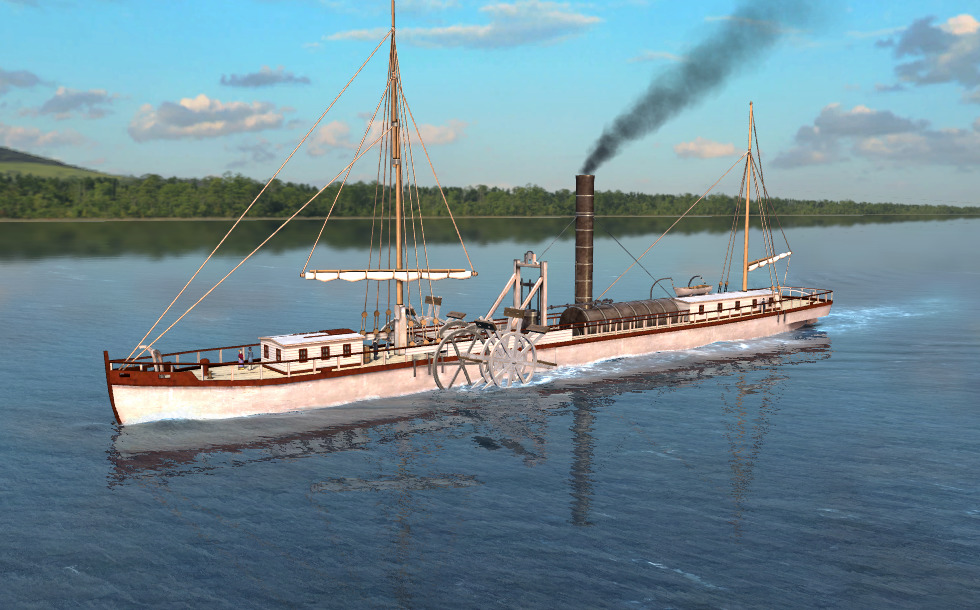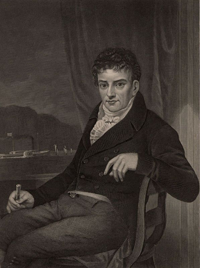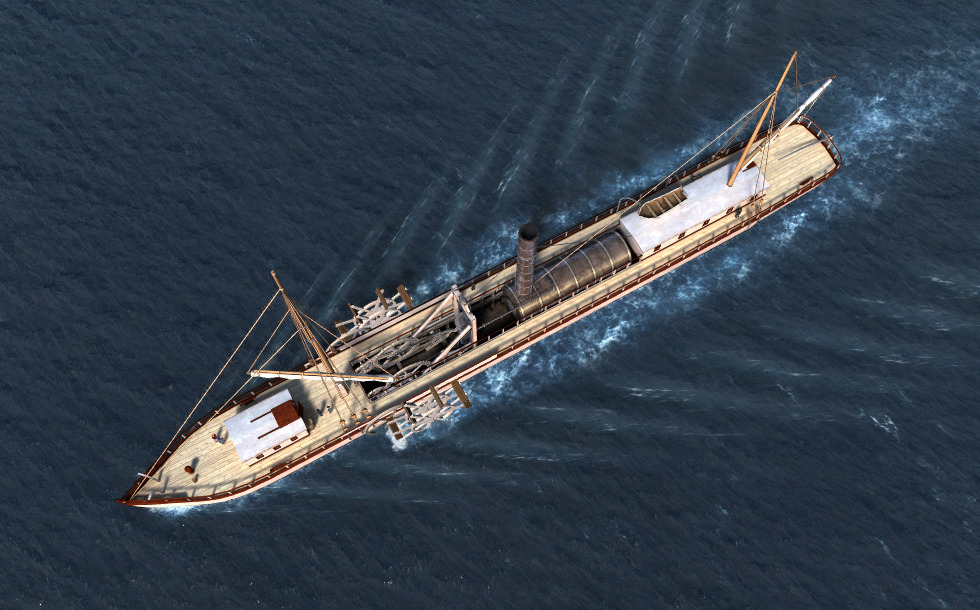North River Steamboat (Clermont) (1807)
North River Steamboat (Clermont) (1807)
Robert Fulton American engineer created the first operational steam-powered ship.
5.-12. klase
mozaLink
/Tīmekļa saite
Ainas

North River Steamboat
Fulton and his invention
The industrial revolution, which had begun in the 18th century, had an important effect on transportation, too. Inventors worked on vehicles driven by steam engines.
American engineer Robert Fulton had been working on a steamboat since 1803. After years without success in France, he returned to the US on 1806 and continued his work in a ship factory in New York. The first longer voyage of the steamer on the Hudson River between New York and Albany, on 17 August 1807, lasted 32 hours and covered a distance of 241 km.
The Clermont was the first operational steam powered wooden paddle ship. It was used for passenger traffic from January 1808.
Fulton was not only the inventor of the first operational steamer, but also the designer of the first submarine, the Nautilus.

Robert Fulton

Top view
Construction
Fulton’s steamer was relatively narrow, and was equipped with two paddle wheels on the sides. Later the paddle wheels were moved aft, due to the limited space available in river traffic.
Wider steamers could of course carry more freight and more passengers.
The steam engine driving the shaft was located in the centre of the hull. A proper distribution of weight was a very important principle in the design of steamers. The top of the engine room, the cabin structure, the roof, the masts and the funnel extended above the hull. Two lifeboats were also carried on the deck of the boat.

Propulsion
The steamer
James Watt’s improved steam engine was utilised in many areas, with the most revolutionary result in the advance of transportation (steam locomotives, steam boats). Fulton’s steam boat was driven by a one-cylinder, 20 hp steam engine produced by Boulton&Watt.
The Clermont steamer was powered by paddle wheels. The steam engine drove a shaft with two paddle wheels attached to it. The rotation of these wheels produced the thrust. 3–5 blades were in the water at the time. The wheels were made as large as possible, in order to reach higher speeds. In later versions the blades were not fixed, allowing free movement, thus making the paddles more efficient.

Construction
- foremast
- funnel
- sails
- mizzen mast
- paddle wheel
- steam engine
- boiler
- rudder
The industrial revolution starting in the 18th century had an important effect on transportation. Inventors worked on vehicles driven by steam engines. American engineer Robert Fulton had been working on a steamboat since 1803. After years without success in France, he returned to the US in 1806 and continued his work in a shipyard in New York. Heading down the Hudson River between New York and Albany on 17 August 1807, the ship’s first long voyage lasted 32 hours and covered a distance of 241 km. The Clermont was the first operational steam-powered wooden paddle ship.
Most of the structure was made of wood, except the steam engine itself and the sails. Later steamboats were mostly made of iron instead of wood. When we look around the deck of the ship, we can see the drums of the wooden wheels, the funnel for the boiler, the engine house and the sails (as many of the first steamboats were reconstructed sailboats). The masts, the sails and the funnels were fastened to one another and to the hull by strong wires.
The Clermont was propelled by paddle wheels. The steam engine drove an axle with two paddle wheels attached to it outside the hull. The rotation of these wheels produced a thrust. 3–5 blades were submerged at one time. The wheels were as large as possible so that they produced a higher speed. The Clermont had an average speed of 8 km/h on its maiden voyage. It was used for passenger traffic from January 1808.

